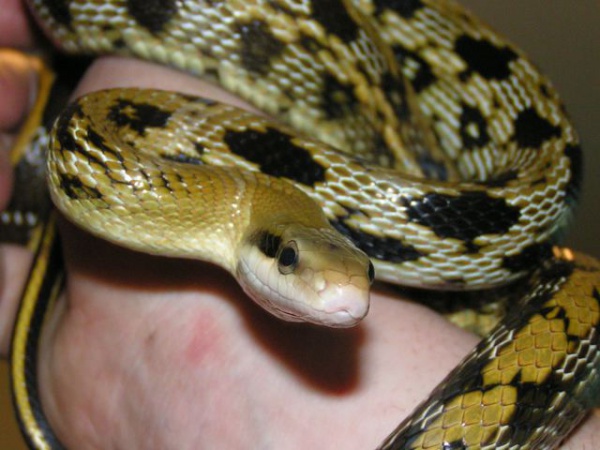Facts About Beauty rat snake
The beauty rat snake, also known as the beauty ratsnake, beauty snake, or cave racer, is a captivating member of the Colubridae family. Native to eastern and southeastern Asia, this snake is distinguished by its long, slender body and semi-arboreal habits. With multiple subspecies, the beauty rat snake exhibits a diverse range of habitats and characteristics.
These snakes primarily prey on rodents, making them valuable for pest control. They are also sometimes kept as pets. However, in some regions, they can become invasive and disrupt local ecosystems.
Typically, a beauty rat snake can live between 15 and 25 years and usually grows to about 4-6 feet in length. Remarkably, some individuals have been recorded at nearly 9.2 feet long. Their coloration is generally yellowish-brown to olive, adorned with distinct body markings.
The beauty rat snake thrives in rainforests and caves, often climbing and hunting along cave walls. They are territorial creatures with a varied diet that includes rodents, bats, birds, and eggs.
Regarding reproduction, beauty rat snakes are oviparous, meaning they lay eggs. After mating, the female typically lays 4-12 eggs. She incubates them for around 70 days before they hatch. The young snakes grow quickly and can reach breeding maturity in just 14 months.
These snakes play a crucial role in their ecosystems by controlling rodent populations. However, they are also involved in the snake skin and live snake trade. Human activities, such as the pet trade and military movements, have led to some subspecies becoming invasive, threatening local wildlife.
To manage invasive populations, there are policies and laws regulating the ownership and transport of beauty rat snakes. For example, in Japan, the Taiwanese beauty snake, a subspecies, is classified as an invasive alien species. Authorities have implemented measures to prevent its further spread.
